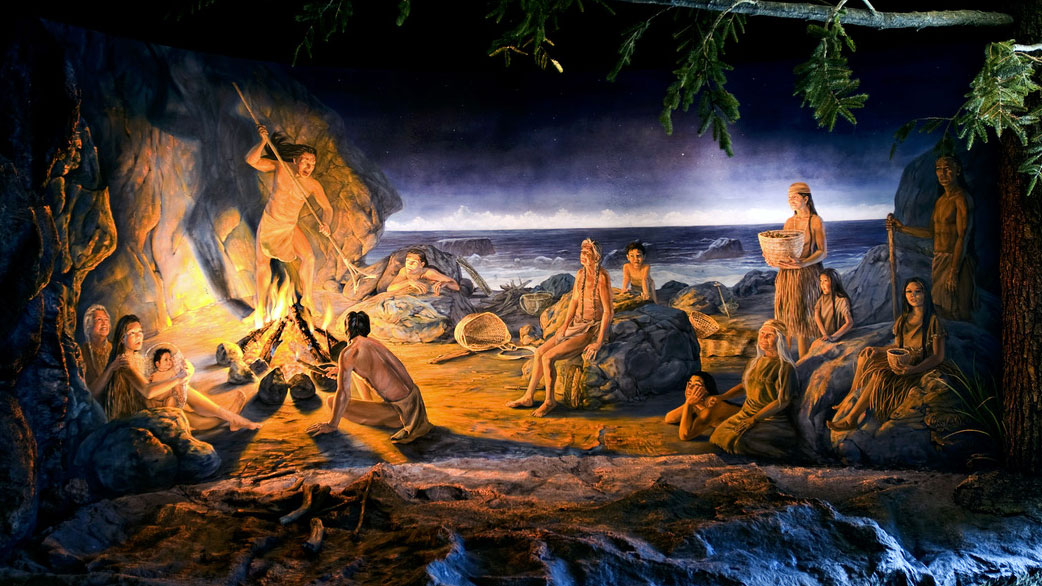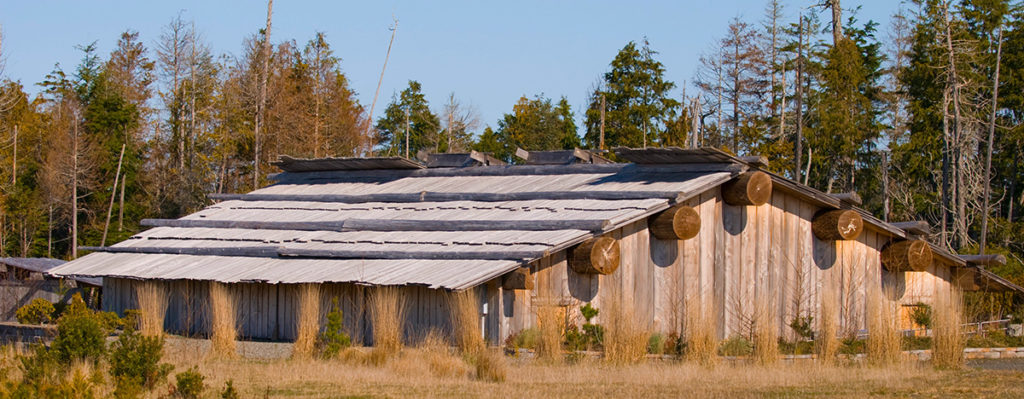
Image copyright Peggy O’Neal 2013 Stories at Grandmother Rock Commissioned by the The Coquille Indian Tribe on view at the Mill Hotel in North Bend Oregon.
Dear Ravers,
Dai’sla (Hello Friends),
This past Friday, the annual winter solstice occurred. This event brings us the shortest day and longest night of the year in the Northern Hemisphere. For many folks, the day itself isn’t a significant event, although for those of us who struggle through dark winter months, look forward to this change. However, the celebration around the winter solstice, is linked not only to what we know as the holiday season, but also holds significance for many cultures.
Growing up as a Coquille Tribal member, it wasn’t until I was a young adult that I began to appreciate the importance of this celestial event.
 Historically, this was viewed as a mid-winter gathering where our Tribal community would assemble at the largest longhouse to dance and tell coyote-stories by the warmth of the fire. It is considered bad luck to tell these stories during the summer. For many tribes traditional storytelling is reserved for the winter months. According to an article in the Smithonian, the Ojibwe say that, “This was a practical choice given the fact that during the other season’s, people were busy growing, gathering, and hunting food. It was in the winter, with the long, dark evenings, the snow and wind blowing outside, that telling stories was a way to entertain and teach the children. Another reason is that many traditional stories contain animal characters. To be respectful, people waited until the winter when animals hibernate or become less active, so they cannot hear themselves being talked about.”
Historically, this was viewed as a mid-winter gathering where our Tribal community would assemble at the largest longhouse to dance and tell coyote-stories by the warmth of the fire. It is considered bad luck to tell these stories during the summer. For many tribes traditional storytelling is reserved for the winter months. According to an article in the Smithonian, the Ojibwe say that, “This was a practical choice given the fact that during the other season’s, people were busy growing, gathering, and hunting food. It was in the winter, with the long, dark evenings, the snow and wind blowing outside, that telling stories was a way to entertain and teach the children. Another reason is that many traditional stories contain animal characters. To be respectful, people waited until the winter when animals hibernate or become less active, so they cannot hear themselves being talked about.”
What’s interesting to me is that these celebrations began over 12,000 years ago! What many people do today “around the holidays” – including what they eat and how they decorate, is intertwined between many cultures and religions. It marks the return of the sun’s presence in the sky, and is associated with renewal, birth, sun gods, and life-death-rebirth deities.
It’s also interesting that the colors and decorations we use are linked back to these ancient celebrations: red, white and green are Druidic colors. Holly, ivy, mistletoe, evergreen boughs and wreaths also adorned dwellings. During this celebration, Tribes from our coastal region in Oregon, shared food that was harvested/caught and stored for the winter months like dried fish, meat and berries. Blue camas is also prepared. It is similar to a baked sweet potato, as well as pemmican which is typically ground berries, cherries, dried game meat and fat. Today at celebrations, this tradition continues.
Deana and I celebrate with family and close friends with a bonfire outside and the burning of traditional materials such as bear grass, huckleberry and Kinnikinic while sharing a meal of preserved salmon and other seafood from our area still available in December, such as oysters and clams.
At Raving, we honor and appreciate all traditions. The holidays can be such a stressful time; invoking many emotions and can be overwhelming.
As we enter the return of longer days, we wish you time to gather with the people closest to your hearts, to take a break, tell stories, and eat food that is traditional for your family.
From all of us here at Raving, sending you peace, joy and prosperity. We are grateful for your friendship.
Tsu Tse Wass (That’s it)
Brady Scott and the Ravers







